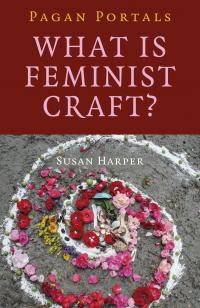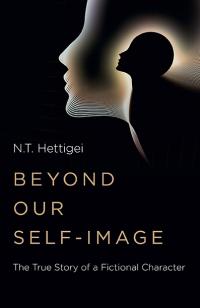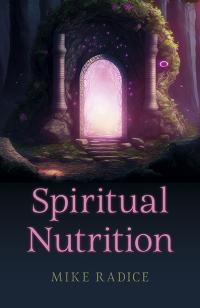
 The
Hidden Goddess. The banished and dismantled goddess. The lost. The forgotten. Who was she? Who praised her name? And what fate befell her?
The
Hidden Goddess. The banished and dismantled goddess. The lost. The forgotten. Who was she? Who praised her name? And what fate befell her?
There are no easy answers to these questions. Details have been erased and distorted over the centuries. Her altars have been toppled and her sanctuaries razed. She is cloaked in controversy, welcomed by few and opposed by many. Yet despite the desperate attempts by reformers and zealots to erase her name from the collective human memory, remnants of her reign lingers, waiting to be discovered in the most unlikely of places – the Hebrew Bible.
To understand her story, we must for a moment, go back to the beginning. Although scholars now date the earliest examples of goddess worship to approximately 25,000 years ago, our story begins in the second millennium BCE. Great civilizations have emerged along the Euphrates and Nile rivers. All-powerful kings and pharaohs shape the destiny of mankind. Empires rise and fall, combine and disperse.
For the common people of the era, survival is oftentimes incredibly difficult. Political turmoil, devastating poverty, and anxiety over the mysteries and danger that seemed to lurk around every corner permeated all aspects of life. The world was, as it had always been, in the midst of great change and evolution. To interpret the chaotic world in which they lived, to glean from the unknown some sense of direction, the people of the ancient world turned their thoughts to the higher realms of the gods and goddesses.
Just as their ancestors before them, the people of the ancient Near East recognized the divinity of the natural world. They looked down at their feet and saw grass and grain sprout forth and saw the goddesses of life and fertility. They looked up at the gathering clouds and saw the familiar face of the sky gods and life-bringing storm gods. They felt the celestial in every breath of wind, every cry of a newborn child, and every turn of the seasons. Throughout the entire ancient world, men and women searched for meaning beyond themselves and found a host of gods and goddesses gazing back at them.
A myriad of vibrant and beautiful mythologies sprang from the ancient person's search for the divine. Every aspect of life and death was controlled by a ruling deity. Those beings worked together, and sometimes against each other, to control and guide the development of the cosmos and of civilizations. And although the details frequently varied between empires, some forces emerged again and again. Among the most beloved and ancient was the great Mother Goddess. Her name would change, her realm would grow and shrink, but for thousands of years her importance stood as a testimony to her worth and power.
The significance of goddess worship in the ancient world cannot be overstated. Men and women alike looked to the comfort of the Mother Goddess and petitioned her for blessings of love and progeny. Her role in the universe often reflected the role of mortal women. She was a mother, wife, daughter, and sister. She oversaw the fruits of agriculture, ran the household, and healed the sick and injured. From her body sprang not only children but the earth itself. She was the foundation of the faith of millions. Recognizing the duality of nature and the need for both male and female energies, the Mother Goddess stood as an equal to the Father God for millennia.
But in a rather unremarkable corner of the Near East, the idea of One True God had begun to grow. A small group of people were about to step off the well worn paths of their ancestors and begin their own extraordinary journey. It is a journey that will, quite literally, change the course of humanity forever.
Scholars and theologians have long debated the exact details of the founding of Israel and its radical monotheistic ideals. The historical truths have been lost to us throughout the centuries, due either to the simple passing of time or to the revising of history by a host of Biblical authors often writing hundreds of years after the events they recorded. However, the Pentateuch (or first five books of the Hebrew Bible) provide an account of the forming of the Israelite nation as the people themselves believed it to have occurred. Once slaves in the land of Egypt, Moses, the prophet of the god Yahweh, had delivered the people from their bonds in an epic known simply as the Exodus. After their miraculous escape, the people wandered in the wilderness until finally they came to the base of Mt. Sinai. Descending on the mountain as fire and smoke (Exodus 19:18), Yahweh revealed himself to Moses and the assembly of fearful, awe-struck people and delivered his laws and commandments for his newly amassed followers. Moses and Yahweh then formed a covenant declaring, among other things, that “thou shalt have no other gods before me” (Exodus 20:3), and the foundations were laid for the three great monotheistic religions we know today – Judaism, Christianity, and Islam.
Up until this moment in history, the earth and heavens had been filled with a host of gods, goddesses, and other powerful divine creatures. Their existence was unquestioned. The very cycles of life were set into motion by the divinities. But Yahweh sought to dethrone these other supreme beings and set himself apart and above them. This was a profound shift in the dynamics of the cosmos. Within polytheistic religions, there was always room for another god. Conquered nations often blended their own deities with those of their new masters and vice versa. Some gods and goddesses were so powerful that their influence stretched across many nations and throughout hundreds of years. From this constant melding of people and ideals, new beliefs flourished and religious tolerance was natural. No one god or goddess set out to claim their superiority. But Yahweh, the god of Israel, had declared himself King, above the reproach of man or god.
Despite what some Biblical adherents would like us to believe, the Israelite people did not spring from the dark ages of paganism fully formed and faithful to no god but Yahweh. Instead, they shared many of the same beliefs as their contemporaries in Mesopotamia, Egypt, and Canaan. Moses may have agreed to have no god before Yahweh, but it was a promise that his people often found difficult to abide by. Exodus 32 tells us that even before Moses came down from Mt. Sinai, his people had cast a calf of gold to worship and give thanks to for their liberation from Egypt. Monotheism was a new and difficult concept to grasp, and the reign of the gods and goddesses would not easily be deposed.
Although the Bible is clear that Yahweh transcends the bounds of gender, that his form is unknowable and crafted of pure spirit, he is unmistakably male in his depictions. The Hebrew language, the original language of the Bible, assigns a gender to every noun, pronoun, verb, and adjective. Without fail, the words used to describe Yahweh are unquestionably male. As Raphael Patai wrote in his groundbreaking work, The Hebrew Goddess, “Every verbal statement about God conveyed the idea that He was male.” And no efforts were ever made to alter that perspective. Yahweh did not need a physical body to be perceived as masculine. It was undeniably present in everything he did.
To some extent, Yahweh's maleness was irrelevant. He simply absorbed the powers and characteristics of his rival gods. This was a normal and familiar step in the progression of polytheistic faiths. Gods absorbed and fused with other deities all the time. For the early Israelites, Yahweh didn't seem much different than the Canaanite gods El or Ba'al. In fact, there is a substantial amount of evidence suggesting that the God of the earliest sections of the Hebrew Bible did not represent Yahweh at all. Instead, it is most likely El, the father of mankind and gods alike, that is speaking to the patriarch Abraham in the book of Genesis. Yahweh undoubtedly filled the role of the father god for the Israelites just as El had done for the Canaanite people. But Yahweh did not stop with the conquest of the gods. He was the One and Only. And there was no room for the goddess in Yahweh's heaven or earth.
Unfortunately for Yahweh, and the early champions of monotheism, the goddess would not easily be conquered. She would not relent her powers quietly to this new entity, and her followers would not cast her aside. The overarching maleness of Yahweh left a gaping void in the hearts of the people where once the Divine Feminine in all her incarnations had resided. No longer was there a great Mother to nurture and guide her children. No longer did women appear as an equal, complementary figure to men. Men were now firmly in control of heaven, and below on earth, the patriarchy of the Israelites was soundly in place. They corrupted the goddess' names, razed her groves, smashed her altars, and defaced her icons. And yet, she persisted.
Scholars now understand that the Israelite people worshiped a multitude of deities, especially the goddess in her various manifestations. This, of course, was utterly scandalous when the evidence first began appearing and even today is vehemently denied by many of the faithful. But a careful reading of the Bible, especially the Old Testament, reveals that not only did the people retain parts of their pagan leanings, but that often these beliefs and practices fused with their worship of God Almighty. Especially among the common people (who formed the vast majority of the Israelite nation), paganism blended with the One True God to form a plethora of varieties and flavors of Yahwism. And many of those focused on the goddess who filled the voids left in a universe ruled solely by the masculine. Verse after verse in the Hebrew Bible describes the early church leaders and rulers relentlessly trying to annihilate the worship of other deities. Often, they appear to succeed. That is, until the next generation of Israelites came into power and restored the ancient practices. It was a battle that was repeated again and again throughout the Bible.
Eventually, Yahweh did prove victorious over the ancient pagan gods. The old beliefs had been twisted and perverted in such a way that the faithful began to fear the paths of their ancestors. The old gods seemed foreign and the goddess an abomination. Monotheism and patriarchy took firm control over the course of humanity, for better or for worse. The goddess had finally been destroyed, her domain fully assimilated by Yaweh.
Or was she?
Perhaps there is something in human nature that yearns for a great mother figure. Carl Jung, father of analytical psychology, certainly believed so. He saw the Mother Goddess as an archetypal figure, always at work in the human psyche. Archaeological evidence has shown that it was the goddess that first appeared when man turned his thoughts to higher realms. For thousands of years she had tread among her children, mortal and god alike. Yahwism did, undeniably, a thorough job of extinguishing her hold on the hearts of man. But her seeds had already been planted. We see her shadow throughout the Bible and in the material remains of a people whose beginnings now lie in mystery and myth. She is there still, awaiting rediscovery – hidden, but not dead.
This book seeks to breathe life back into the Goddesses of the Hebrew Bible. The Divine Feminine remains, buried among the pages of countless Hebrew authors, in many subtle ways – in the unknown wife of God, in the creation and fall of the first women, in the woman that bears the child of God and in the woman that weeps for him. She fills the spirit of the powerful and rebellious. Her symbols stand in the Garden of Eden and the Temple of Jerusalem. Her names may have been forgotten, but her presence still lingers.
This is the quest to find the Divine Feminine in the Hebrew Bible. This is the story of the Hidden Goddess.
Laurie Martin-Gardner
Categories:
0 comments on this article






